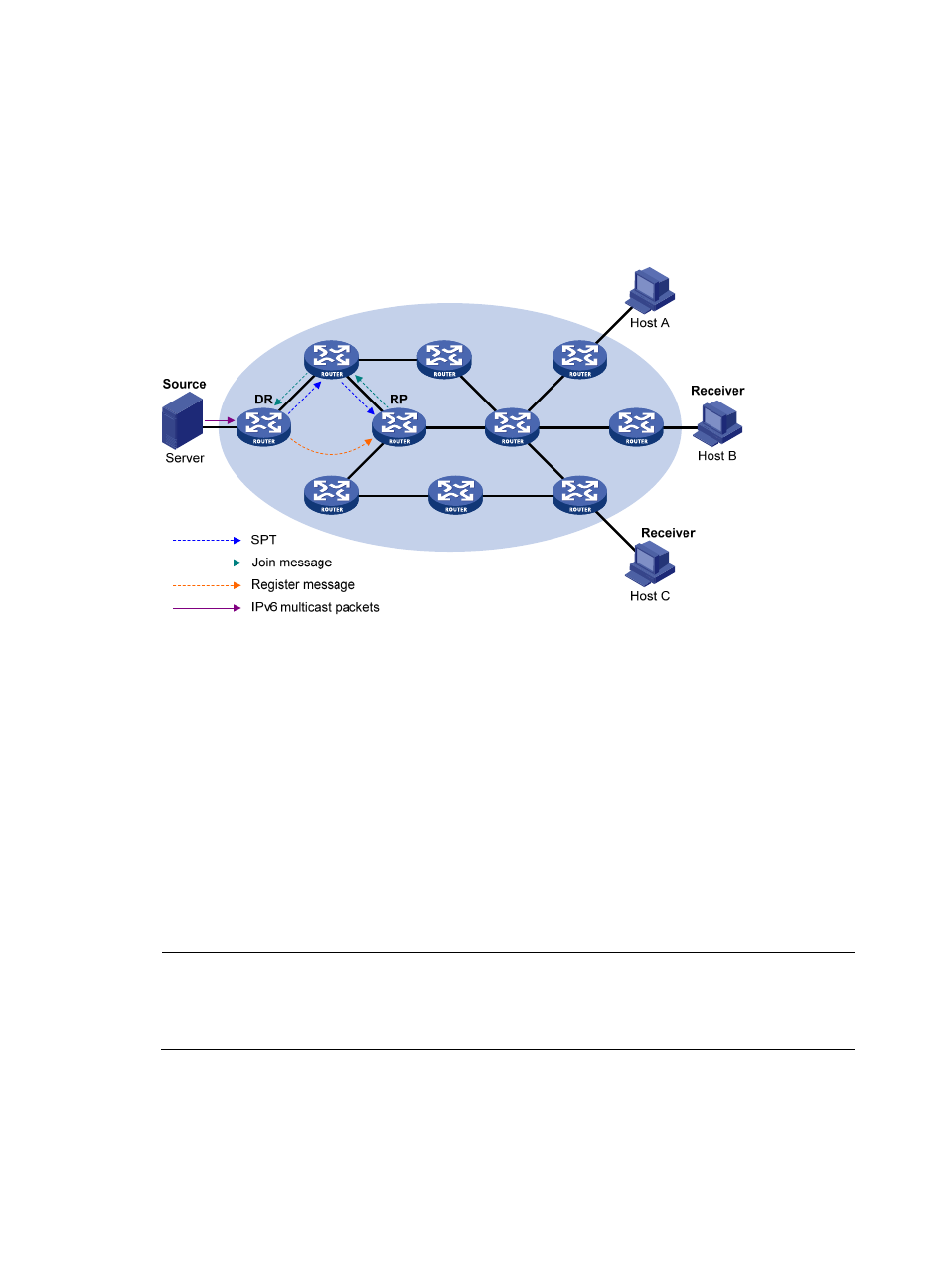Multicast source registration, Switchover to spt – H3C Technologies H3C S10500 Series Switches User Manual
Page 378

363
node from the outgoing interface list and determines whether it has receivers for that IPv6 multicast group.
If not, the router continues to forward the prune message to its upstream router.
Multicast source registration
The purpose of IPv6 multicast source registration will inform the RP about the existence of the IPv6
multicast source.
Figure 97 IPv6 multicast source registration
As shown in
, the IPv6 multicast source registers with the RP as follows:
1.
The IPv6 multicast source S sends the first IPv6 multicast packet to IPv6 multicast group G. After
receiving the multicast packet, the DR that directly connects to the multicast source encapsulates the
packet in a register message. Then it sends the message to the corresponding RP by unicast.
2.
When the RP receives the register message, it extracts the multicast packet from the register
message and forwards the multicast IPv6 multicast packet down the RPT, and sends an (S, G) join
message hop by hop toward the IPv6 multicast source. The routers along the path from the RP to the
IPv6 multicast source form an SPT branch. Each router on this branch generates an (S, G) entry in
its forwarding table. The source-side DR is the root of the SPT, and the RP is the leaf of the SPT.
3.
The subsequent IPv6 multicast data from the IPv6 multicast source travels along the established SPT
to the RP, and then the RP forwards the data along the RPT to the receivers. When the IPv6 multicast
traffic arrives at the RP along the SPT, the RP sends a register-stop message to the source-side DR
by unicast to stop the source registration process.
NOTE:
The RP is configured to initiate an SPT switchover as described in this section. Otherwise, the DR at the IPv6
multicast source side keeps encapsulating multicast data in register messages and the registration process
will not stop unless no outgoing interfaces exist in the (S, G) entry on the RP.
Switchover to SPT
In an IPv6 PIM-SM domain, an IPv6 multicast group corresponds to one RP and one RPT. Before the SPT
switchover occurs, the DR at the IPv6 multicast source side encapsulates all multicast data destined to the
multicast group in register messages and sends these messages to the RP. After receiving these register
messages, the RP extracts the multicast data and sends the multicast data down the RPT to the DRs at the
